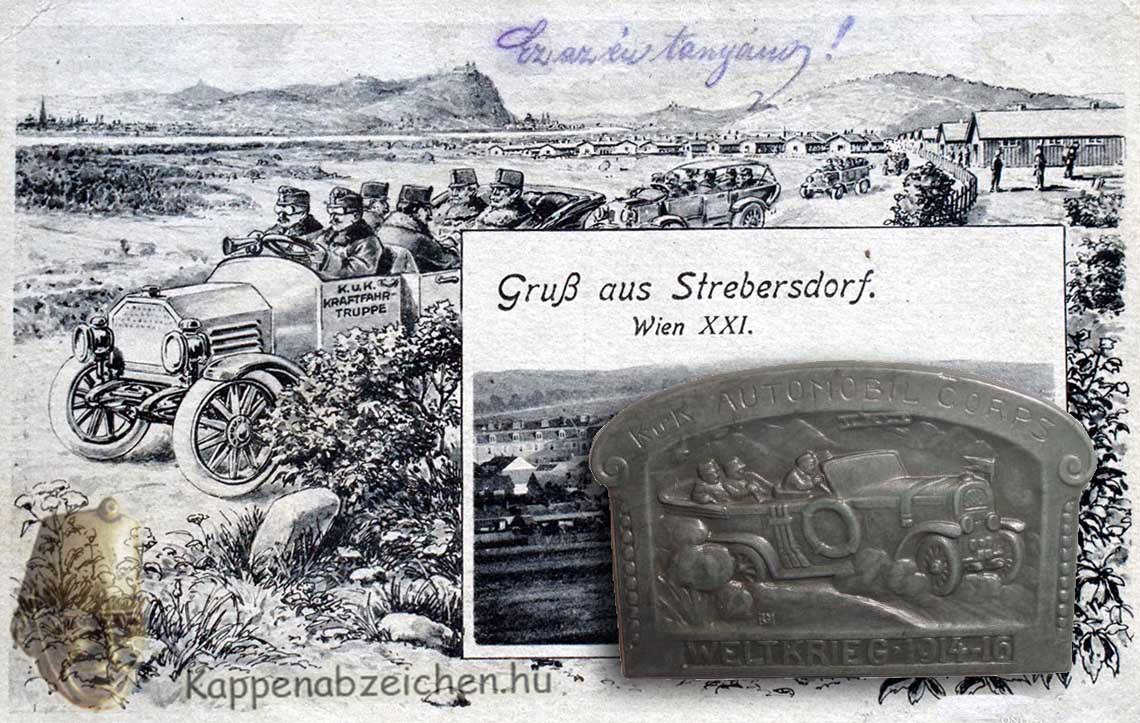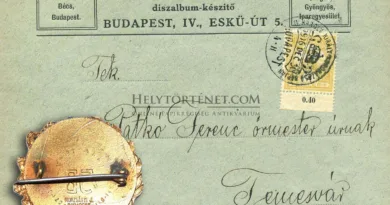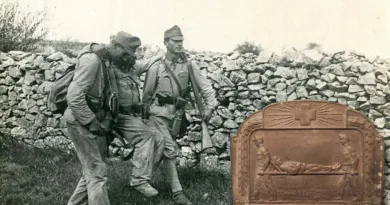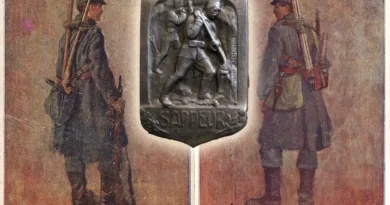Motorized troops
The Great War developed new forms and tools of warfare. Driving a car was still in its infancy at that time, but the importance of motorization was recognized even earlier. And the armies were supplied with an increasing number of motorized transport vehicles. The most important of these was the truck, followed by the car. We see the latter applied to a cap badge and a postcard in this post.
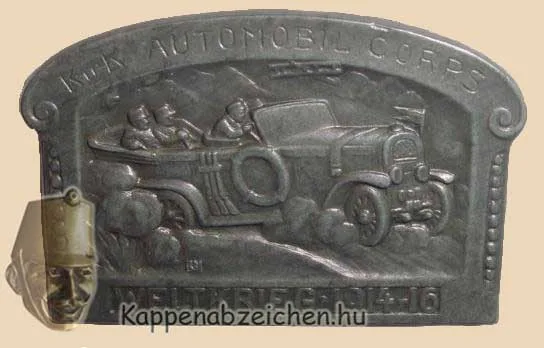
Looking through the memories of the time, I got the impression that the use of cars in the army of the Monarchy was very limited. Cars were perhaps used by regimental commanders, but they were most likely transported by vehicles sent from the brigade or division, the infantry regiments did not have their own fleet of vehicles. This could be due to the limited number of units available, the special needs of operation and maintenance, which were difficult to provide under field conditions. The same applied to trucks. They were mainly used to transport materials and the njured, not to move troops. At that time, the category of “mobilized infanterist” living in the memories of my youth had not yet been born.
In my readings about the Monarchy’s involvement in the Holy Land, the transport troop sent there is often mentioned. Trucks were used to transport the most important supplies, ammunition, weapons, and fuel for the own troops from the supply centers. On the way back, the wounded and sick were taken to the hospitals of the centers. It was exciting to read how much invention and professional skill was needed in order the mechanics could keep the vehicles operational in the rudimentary conditions despite the intermittent supply of spare parts. I don’t think that the task would have been significantly easier at the European fronts, but of course due to the relative proximity of the vehicle manufacturing factories, the replacement of vehicles was more regular.
I previously presented the other insignia of the motorized troops in a wearing photo here.

